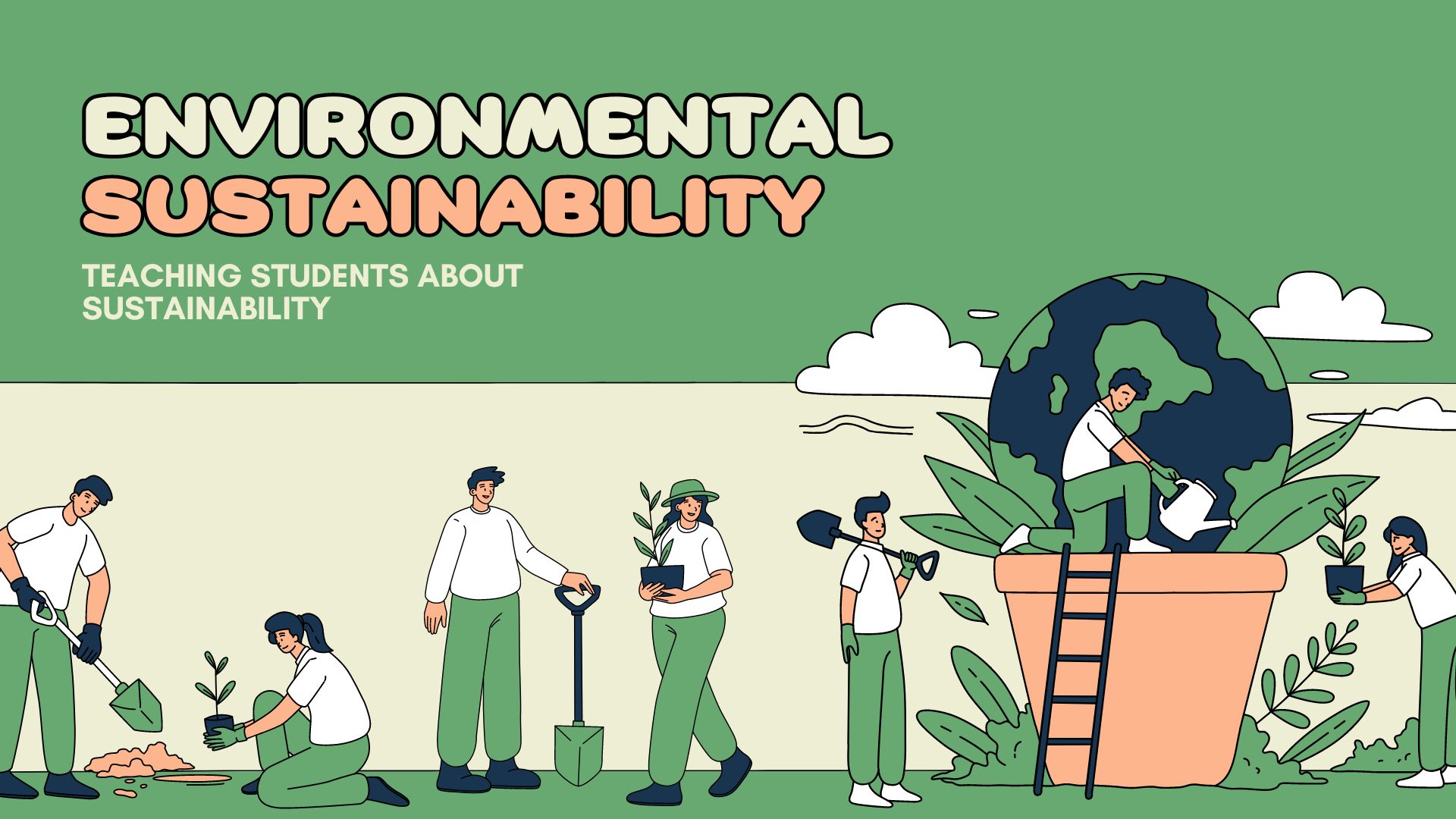In a world increasingly impacted by environmental challenges, it’s more important than ever to educate young learners about sustainability. Environmental education not only raises awareness of environmental issues but also empowers students to take proactive steps towards a more sustainable future. This comprehensive blog explores the significance of teaching students about sustainability and offers practical strategies for incorporating environmental education into the classroom.
Why Environmental Education is Crucial
Environmental education serves as a cornerstone in fostering a generation that is informed, responsible, and proactive about environmental stewardship. Here’s why it’s essential:
- Raising Awareness About Environmental Issues
Environmental education introduces students to critical issues such as climate change, pollution, deforestation, and biodiversity loss. By understanding these challenges, students are better prepared to contribute to solutions and advocate for environmental protection. Awareness is the first step toward action, and educating students about these issues helps them recognize their role in addressing them. - Fostering a Sense of Responsibility
Teaching students about sustainability instills a sense of responsibility for the environment. When students learn about the impact of human activities on natural resources, they become more mindful of their actions and their consequences. This sense of responsibility encourages students to adopt sustainable practices in their daily lives, from reducing waste to conserving energy. - Encouraging Critical Thinking and Problem-Solving
Environmental education promotes critical thinking by challenging students to analyze complex environmental issues and develop solutions. Through projects, research, and discussions, students learn to evaluate different perspectives, assess evidence, and propose actionable solutions. These skills are not only valuable for addressing environmental problems but also for general problem-solving in various aspects of life. - Promoting Sustainable Practices
Understanding sustainability helps students make informed decisions about their consumption and lifestyle choices. By learning about recycling, energy conservation, and sustainable agriculture, students are equipped with the knowledge to make eco-friendly choices. Promoting these practices within the classroom and beyond reinforces the importance of living sustainably. - Preparing Future Leaders
Environmental education prepares students to become future leaders in environmental advocacy and conservation. Equipped with knowledge and skills, students can drive change, influence policy, and contribute to sustainability efforts on a larger scale. Early education in environmental issues builds a foundation for lifelong commitment to protecting the planet.
Effective Strategies for Teaching Environmental Education
Incorporating environmental education into the classroom can be both engaging and impactful. Here are some effective strategies:
- Hands-On Activities and Experiential Learning
Hands-on activities offer practical experience in environmental conservation. Activities such as gardening, composting, and conducting nature surveys provide students with direct involvement in environmental practices. These experiences help students connect theoretical concepts with real-world applications, making learning more engaging and memorable. - Integrating Environmental Topics Across the Curriculum
Environmental education can be woven into various subjects, enhancing its relevance and impact. For instance, math lessons can involve analyzing environmental data, while science classes can explore ecosystems and conservation. Social studies can cover environmental policies and their impact on communities. This interdisciplinary approach reinforces the interconnectedness of environmental issues and promotes a holistic understanding. - Utilizing Multimedia and Technology
Multimedia resources, such as documentaries, educational apps, and interactive websites, enrich the learning experience by presenting environmental concepts in diverse formats. Virtual field trips and simulations can also provide immersive experiences, allowing students to explore environmental topics beyond the classroom. Technology makes learning interactive and accessible, catering to different learning styles. - Promoting Student-Led Initiatives
Encouraging students to take the lead in environmental projects fosters a sense of ownership and empowerment. Student-led initiatives, such as organizing recycling drives, starting a school garden, or leading awareness campaigns, allow students to apply their knowledge and make a tangible impact. These projects also provide opportunities for collaboration and leadership development. - Partnering with Local Environmental Organizations
Collaborating with local environmental organizations can enhance the learning experience by providing expert insights and practical opportunities. Partnerships with organizations such as conservation groups or nature centers offer access to field trips, workshops, and educational resources. These collaborations help bridge the gap between classroom learning and real-world environmental action.
Creating a Green Classroom Environment
A sustainable classroom environment reinforces the principles of environmental education and sets a positive example for students. Here’s how to create an eco-friendly classroom:
- Implementing Eco-Friendly Practices
Adopting eco-friendly practices within the classroom, such as reducing paper usage, conserving energy, and minimizing waste, aligns with the principles of sustainability. Use digital resources to reduce the need for printed materials, and encourage students to recycle and reuse. Implementing energy-efficient lighting and promoting water conservation are also effective ways to create a greener classroom. - Incorporating Sustainable Design
Sustainable classroom design incorporates environmentally friendly materials and features. Consider using recycled or sustainable materials for classroom furniture and décor. Natural lighting, green plants, and low-VOC paints contribute to a healthier and more eco-friendly learning environment. These design choices not only support sustainability but also create a positive and stimulating classroom atmosphere. - Encouraging Student Participation
Involving students in maintaining a sustainable classroom environment encourages active participation and responsibility. Assign roles such as recycling monitors or energy savers to engage students in eco-friendly practices. Recognize and reward students for their contributions to sustainability efforts to motivate continued involvement.
Conclusion
Environmental education is essential for fostering a generation of informed and proactive individuals committed to sustainability. By integrating environmental topics into the curriculum, utilizing hands-on activities, and promoting student-led initiatives, educators can make a significant impact on students’ understanding and appreciation of environmental issues. For additional resources and ideas, explore our related articles on [Innovative Teaching Methods for Environmental Science], [How to Create an Eco-Friendly Classroom], and [Engaging Students in Sustainability Projects].



Leave a Reply